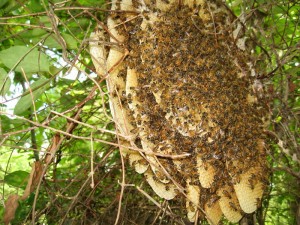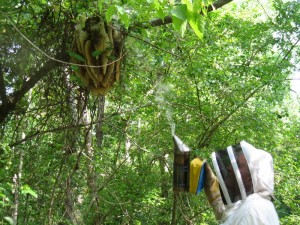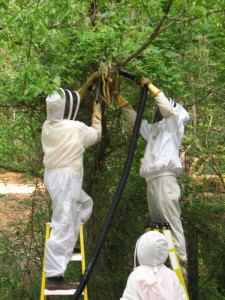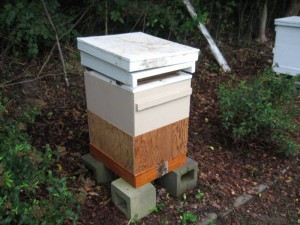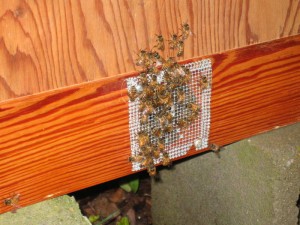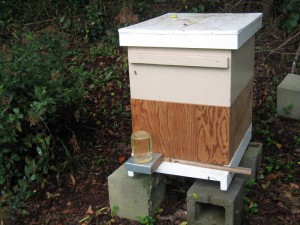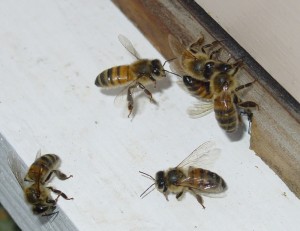A colleague of ours who lives near the Talledega National Forest asked if my beekeeping mentor and I could remove a bee hive. It was located on a tree branch near a construction site on her property. Always up for another beekeeping adventure, we agreed, but we were skeptical about the story. Western honey bees generally establish colonies in hollow tree trunks, not out in the open. And this hive was in a sparsely populated area that had no known beekeepers. We figured this was more likely a hornet’s nest.
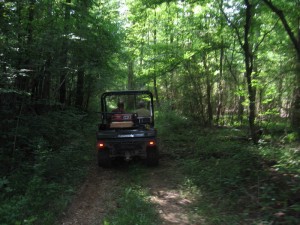
Our 40 mile trip included four miles on a dirt road and a five minute ride in an ATV. Note the gas generator in the back – we would need it to power my bee vac.
When bees swarm, they are supposed to locate a suitable cavity in which to establish a new hive, but sometimes they just make one out in open. In its exposed location, this hive would never survive the winter. The term “cutout” means the removal of a bee hive from an unwanted location, generally the wall or attic of a house. Since there was no siding or roofing material to remove, this should be the easiest sort of cut out to perform.
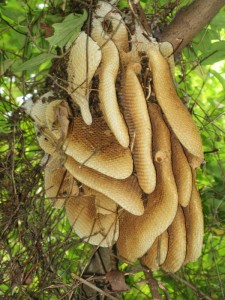
The smoked bees run up to the top of the hive, revealing the beautiful new combs they have constructed.
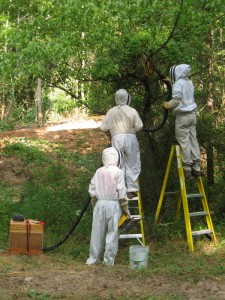
We carefully vacuum the bees off the hives, removing the combs one at a time for later use. Note my home-made bee vac at the lower left.
After returning home, I inserted the combs that had capped brood into empty frames. These went into a brood box, which I slid on top of the bee vac. I wasn’t sure how much ventilation the bees would need, so I installed an inner cover that had the vent hole covered with hardware cloth on top of the brood box. To keep out any rain, I put a screened bottom board and an outer cover on top and called it a night. Here is how it looked the next morning:
My hope was that the bees would move up into the frames overnight, allowing me to remove the bee vac and install a proper bottom board.
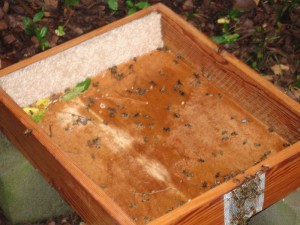
There were only a few dead bees in the bottom of the bee vac the morning after the cut out – a victory for my latest contraption.
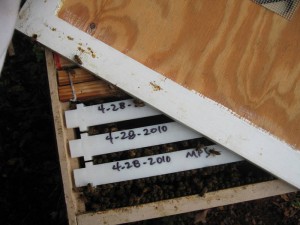
A peek at the brood box the morning after the cut out. The bees had indeed moved up into the frames.
I came back the next day, removed the remaining bee vac box, and installed frames containing eggs and larvae, capped brood, and honey from my established hives. I figured that if there was no queen in the captured colony, the workers could use the eggs and larvae to make a new one.
Today there is good traffic at the entrance, with some occasional pollen being brought in, and the bees have consumed almost a pint of syrup from the feeder in the past 24 hours. I’ll pop the top of the hive next week to see how things look.

